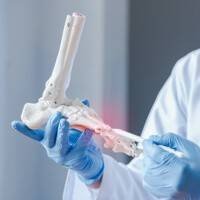Epidemiology
Sciatica is one of the most common types of pain among Hongkongers, though it is important to differentiate between true sciatica and sciatica-like pain. Most patients assume they have sciatica when they experience pain that radiates from their lower back or buttocks to their legs. In fact, these common, sciatica-like symptoms may actually be caused by soft tissue inflammation or other types of chronic pain. As muscle tissue connects from one part of the body to another – for example, lower back muscles extend to the buttocks, while muscles in the buttocks extend to the lower limbs – when there is inflammation, pain may also extend from one part of the body to another, leading patients to believe they are suffering from sciatica. In cases of sciatica-like pain, patients often experience slight pain when they move the affected area, with the pain shifting to different areas as they move. The muscles also tend to relax and the pain may lessen after movement. In addition, sciatica-like pain rarely affects areas below the knee, and generally only occurs behind or at the side of the thigh. As it does not involve compression of the nerves, patients also do not experience numbness or loss of sensation in the feet.
What is Sciatica?
Sciatica is a type of pain that occurs when a herniated disk or bone spur compresses the sciatic nerve, which extends from the lower back to the back of each leg. The pain usually radiates along the path of the sciatic nerve, and because degeneration commonly occurs in the lower two vertebrae, the L5 and S1 spinal nerves are often affected, and the pain may reach the calf or the bottom of the foot. As the condition worsens, nerve function is weakened and the affected muscles may experience numbness or a loss of sensation, impairing movement of the toes and even the person’s ability to walk.






















